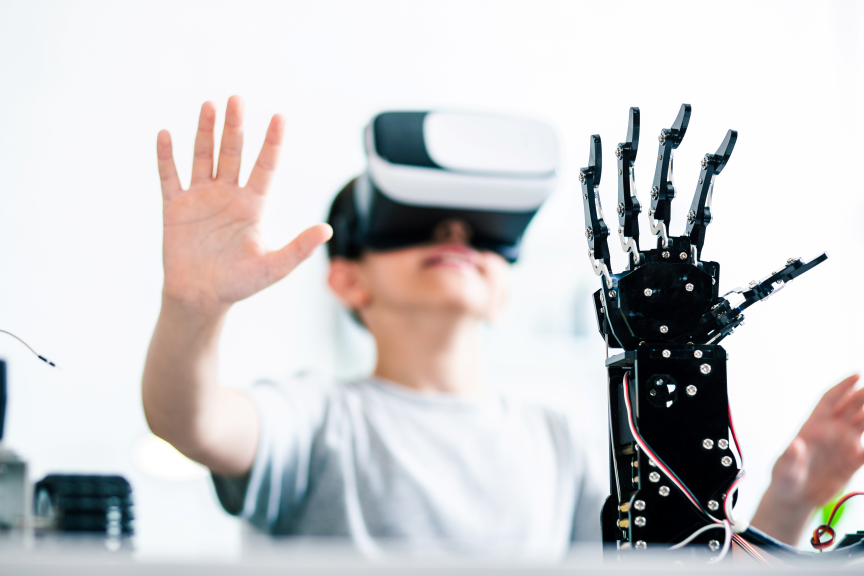Bringing Science to Life with Artificial Intelligence
NYC teachers are using artificial intelligence (AI) to transform STEM education. The New York Academy of Sciences (the Academy) is supporting this effort.
Published May 14, 2025
By Meghan Groome, PhD

Since 2012, The New York Academy of Sciences’ Scientist-in-Residence (SiR) program has paired STEM professionals with public school teachers across New York City to co-design and lead inquiry-based projects in the classroom. Created in partnership with the NYC Department of Education, the program brings authentic, hands-on science learning to students from grades 3 through 12.
For the 2024–2025 school year, SiR is serving 50 classrooms across the five boroughs as well as five classrooms in Elizabeth, New Jersey. The program engages a diverse range of schools—80% Title I—and spans disciplines from biology and chemistry to physics and computer science. The teachers and their scientist partners are transforming the way science is taught and experienced, one classroom at a time.
This year, with support from pilot funding, the Academy launched a new initiative to explore how GenAI tools can elevate classroom projects. Through dedicated workshops, expert coaching, and a “sandbox” where educators can try out new tools, teachers began integrating AI into their existing projects, not for efficiency, but for enhancement. Rather than using AI to automate grading or lesson planning, teachers used it to elevate students’ engagement and understanding.
Tools and Trends from the AI in Classrooms Pilot
1. Elevation over Efficiency
Teachers are not turning to AI to save time—they’re using it to go deeper. By integrating AI into content-specific teaching, educators are enhancing students’ conceptual understanding and critical thinking. One physics class compared AI-generated simulations to actual physical laws, exploring both scientific accuracy and technological limitations.
2. Word of Mouth Matters
The most effective tool adoption happens through trusted networks. Our teacher working group acts as a grassroots recommendation engine. When a tool proves successful in one classroom, it’s shared, tested, and scaled by others.
3. Accessibility and Advocacy
Because many AI tools require approval at the school or district level, teachers are learning how to advocate for access. They share success stories and “tips and tricks” to help one another navigate approval processes—critical as federal AI-in-education guidance and local policies evolve.
4. Ethics as a First Filter
Teachers weigh tools through ethical lenses—considering intellectual property, bias in training data, and environmental impact—often mirroring their students’ own concerns. In the Academy’s high school programs, students consistently prioritize ethical considerations over convenience, a trend echoed by their teachers.
5. Data Analysis is a Gateway
Teachers working with large data sets—from air quality sensors to robot logs—are exploring AI-enabled data visualization tools like Tableau Public, PowerBI, and Google Colab (though the latter is difficult to use in-school). Even simple tools like Google Sheets + Explore are making an impact.
6. Image Analysis Expands Possibilities
From observing plant growth to studying telescope images, teachers are excited by how AI can quantify what once required hours of manual observation. Tools like NASA’s public image analysis platforms, QuPath, and Phyphox are transforming how visual data supports experimentation.
As the Scientist-in-Residence program evolves, it’s clear that NYC teachers are not just ready for the future of education—they’re building it. By fostering innovation, collaboration, and ethical engagement with AI, they’re giving their students the tools—and the inspiration—to become the next generation of scientific leaders.
Learn more about the Academy’s Scientist-in-Residence program.
